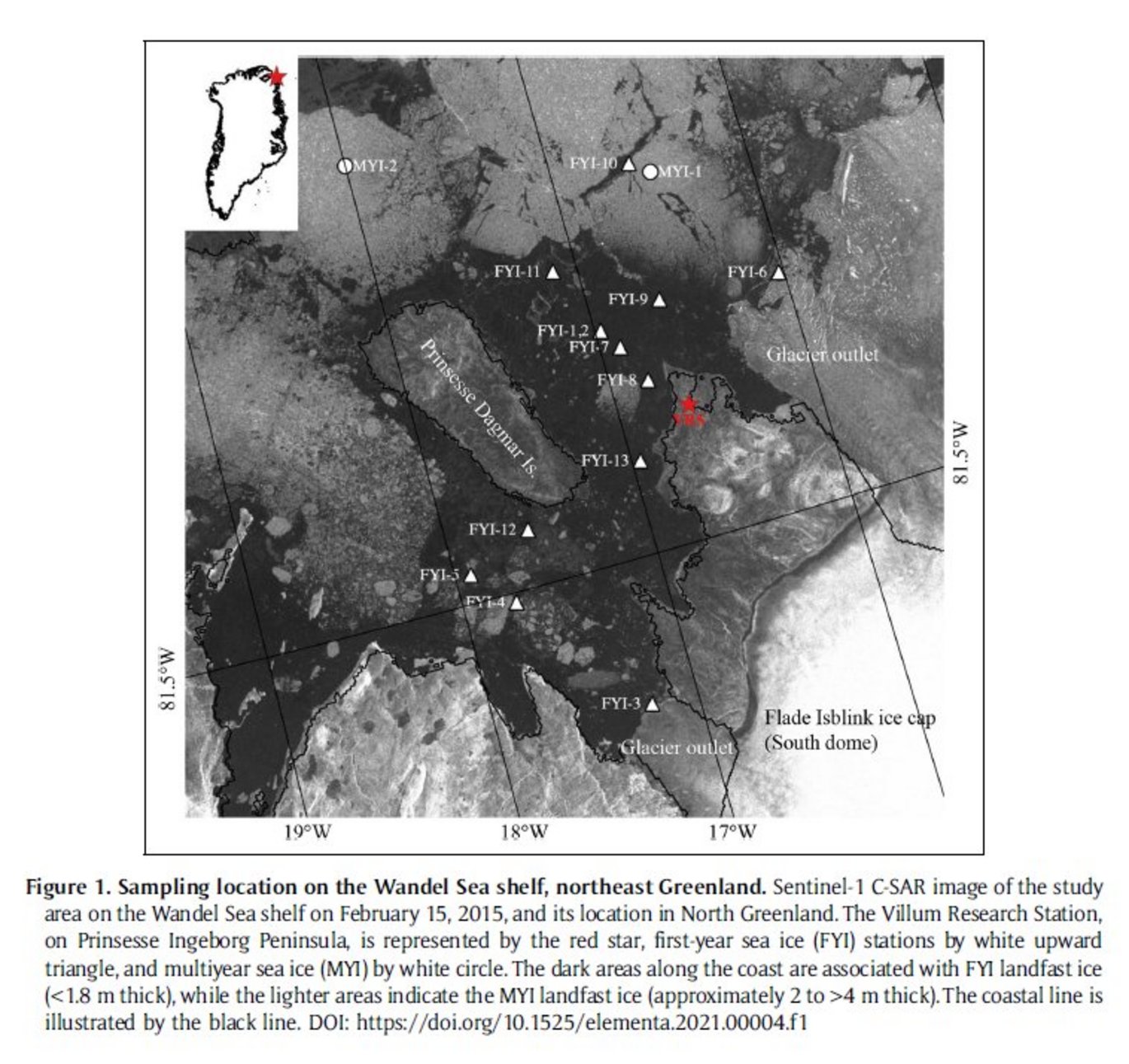Meteoric water contribution to sea ice formation and its control of the surfacewater carbonate cycle on the Wandel Sea shelf, northeastern Greenland
New publication by Nicolas-Xavier Geilfus1, Kathleen Munson, Marcos Lemes, Feiyue Wang, Jean-Louis Tison, and Søren Rysgaard

Abstract:
An influx of glacial meltwater has the ability to alter the properties of marine surface waters and their ability to exchange CO2 through changes to water column stratification and the inorganic carbon system. Here, we report how inputs of meteoric water affect the physical and biogeochemical properties of both the water column and the sea ice cover on the Wandel Sea shelf, northeastern Greenland, during spring 2015. The observed depleted d18O–H2O in the water column, with surface water values as low as –16.3 ‰, suggests a strong input of meteoric water (i.e., water derived from atmospheric precipitation). Depleted d18O–H2O observed within sea ice (from –21.5 to –8.0 ‰) reflects its formation from surface water that was already depleted isotopically. In addition, a thick snow cover, as present during the study, promotes the formation of snow ice as well as insulates the ice cover. Within sea ice, the resulting relatively warm temperature and low salinity impedes ikaite formation. However, measurements of total dissolved inorganic carbon and total alkalinity indicate that, in both sea ice and the water column, the dissolution of calcium carbonate was the main process affecting the carbonate system. This finding suggests that inputs of glacial meltwater deliver glacier-derived carbonate minerals to the ocean which become incorporated within the ice structure, increasing calcium carbonate dissolution in the water column in the absence of ikaite precipitation within the sea ice. If widespread in glacial-fed waters, bedrock carbonate minerals could increase CO2 sequestration in glacial catchments despite the weakening of the sea ice carbon pump.
